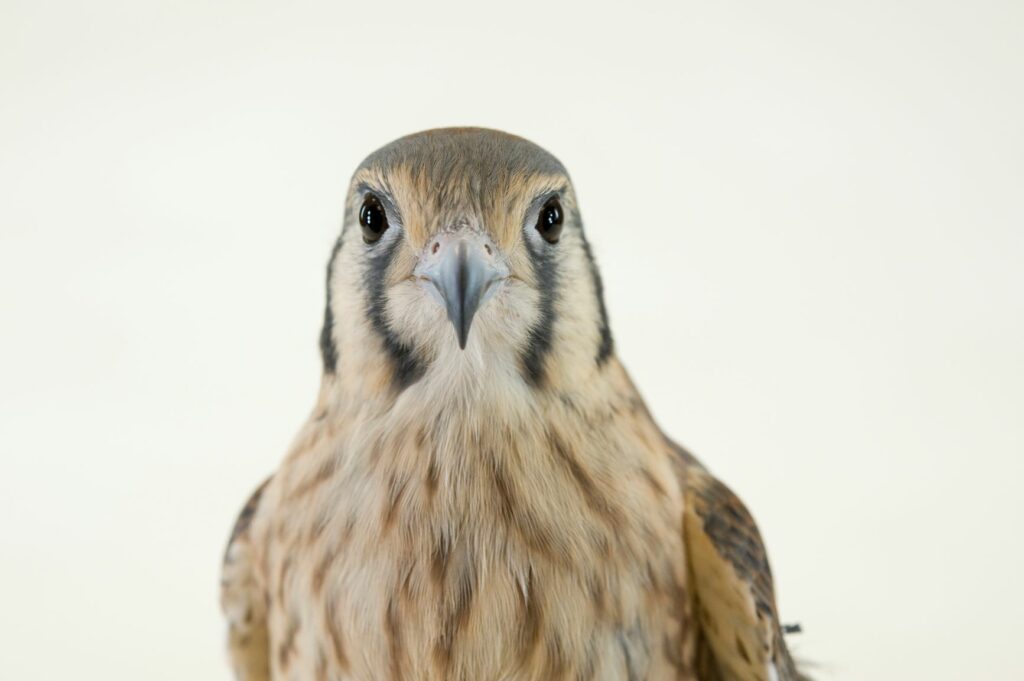
The city of Toronto was crazy for Raptors a couple of weeks ago, when the basketball team won the NBA Championship. It seems to be raptor season at TWC, too.
There’s nothing quite like holding a red-tailed hawk, firmly by its thighs, using your thumbs to point its talons downward, as he is fed. Gorgeous powerful bird, alert to every sound and movement.
This hawk got tangled up in a soccer net and had to be cut out. Now he isn’t eating on his own and needs medication and treatment for his injuries. I held him against my chest, sheet around him for extra support in keeping his wings closed against me and to cover his head and relieve some of his stress.
His eyes are light chocolate brown with black pupil in the middle. He blinks with an opaque lid that quickly covers and uncovers the eyes, like a moist skin membrane.
The other thing that is amazing is his little barbed tongue. Pink, like most creatures, but the hawk’s tongue, about halfway back in its thick downward-curved beak, has prongs facing backward. Like it’s hinged and has two parts – the front part, long narrow oval shaped with its barbed back end looks almost like it’s attached on top of the rest of the tongue.
I’m grateful to have had the chance to hold him as the intern hand-fed him with long metal foreceps. When I was putting the hawk back into his enclosure, I noticed a piece of cardboard under him, and wasn’t sure what it was at first. The intern explained that it is to protect his tail feathers while he’s in the enclosure in ICU.
In any case, once I got him returned as safely and gently as possible, he was not happy. Really not happy. He turned his head, fluffed up his feathers, especially on his head like a fanned crown and looked at me like he was thinking “how dare you.” He stayed like that as I covered his enclosure.
Today was the first time I’ve seen kestrels. A kind of small falcon. Beautiful orange-brown chest and wings with distinct black spots, an alternating black-white-orange around its neck and face. They are not much larger than an adult robin, and rounder. The two that are at TWC were eating and were very agitated when I opened the door of their room to check on them and the state of their enclosure. I always keep as low-key as possible, since I am all too aware that human presence is not a good thing for any wild animal.
Image: ©Joel Sartore/National Geographic Photo Ark
